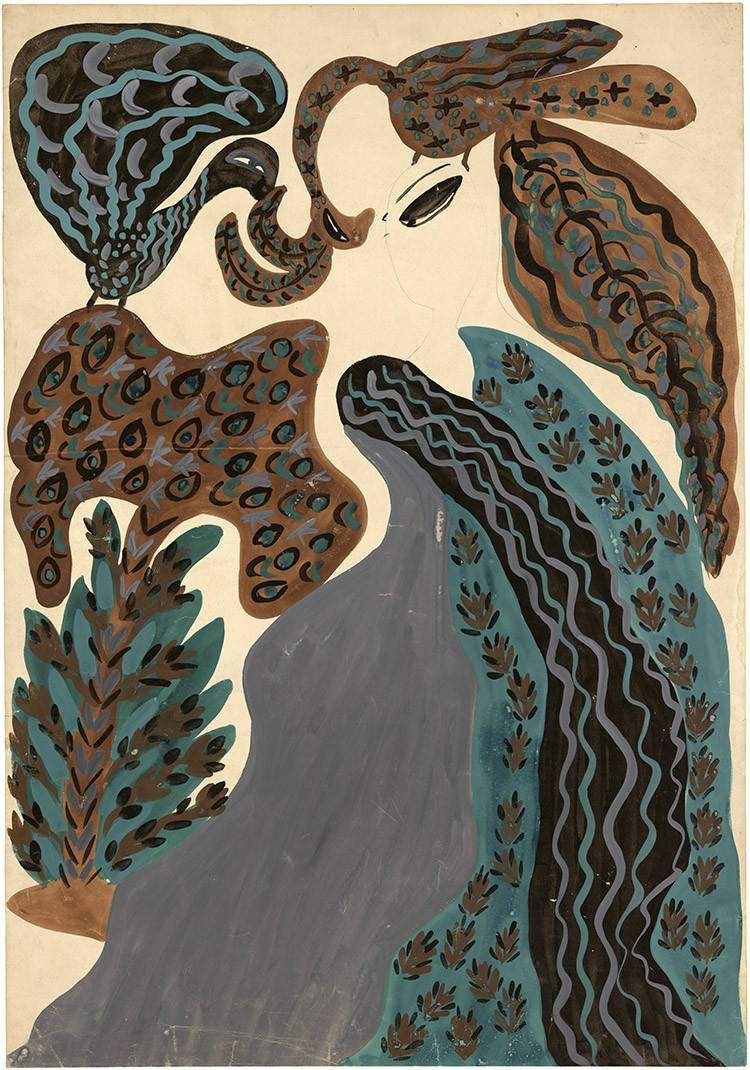Baya (Fatma Haddad)

untitled
Baya, untitled, 1950, graphite and gouache on paper, 107 x 75 cm, photo : Kevin Seisdedos, Atelier de numérisation – Ville de Lausanne, Collection de l’Art Brut, Lausanne
Author
Baya (Fatma Haddad),
(1931–1998), Algeria
Audio biography
Biography
Of mixed Kabyle–Arab descent, Baya (1931–1998) was born Fatma Haddad in rural Bordj El Kiffan, known at the time as Fort de l'Eau, near Algiers. After losing her father at the age of five and her mother shortly afterwards, she was brought up by her paternal grandmother. She did not go to school and so never learned to read and write; instead she helped her grandmother on a farm belonging to French colonists.
In 1943 Marguerite Caminat, sister of the woman who owned the farm, took Baya home with her to Algiers, to work for her as a housemaid.
Noticing that Baya had begun modelling with raw clay found around the house, Caminat supplied her with drawing paper, gouache and proper modelling clay. Baya began turning out compositions of an astonishing maturity for her age, in which female figures intertwined with birds and exotic plants. French gallerist Aimé Maeght discovered her work on a visit to Algiers and showed it in Paris in 1947. The catalogue was prefaced by André Breton and the exhibition was an enormous success. Others followed, mostly in France and Algeria. In 1948 she was given the chance to make pottery in the same studio as Picasso, in the south-eastern village of Vallauris. There she spent the summer with Marguerite Caminat, who introduced her to other artists, including Georges Braque, and to the museums of Paris.
In 1953 her Algerian guardian arranged her marriage to a man thirty years older, living in Blida, and for ten years she gave up painting to devote herself to her six children. When she began again her new compositions included everyday domestic items – bowls of fruit, basins – and her husband's musical instruments. On reopening in 1963 the National Museum of Fine Arts of Algiers had an entire room dedicated to Baya's gouaches, which are also to be found in many private collections, including Jean Dubuffet's Collection d’Art Brut.







